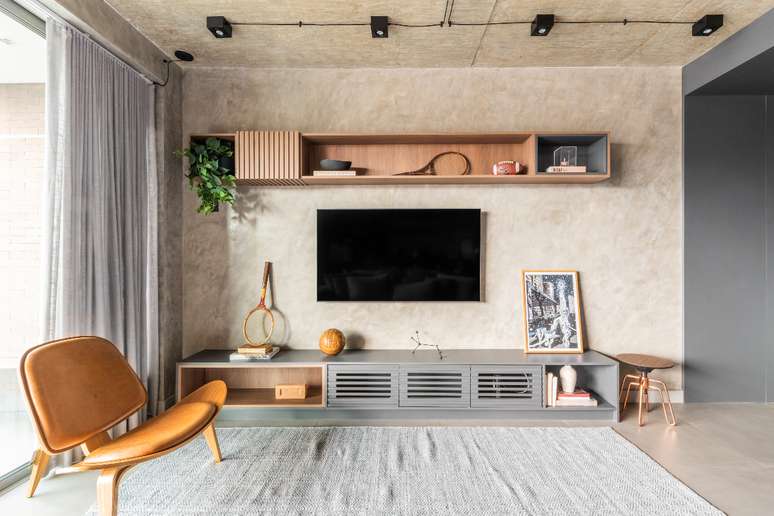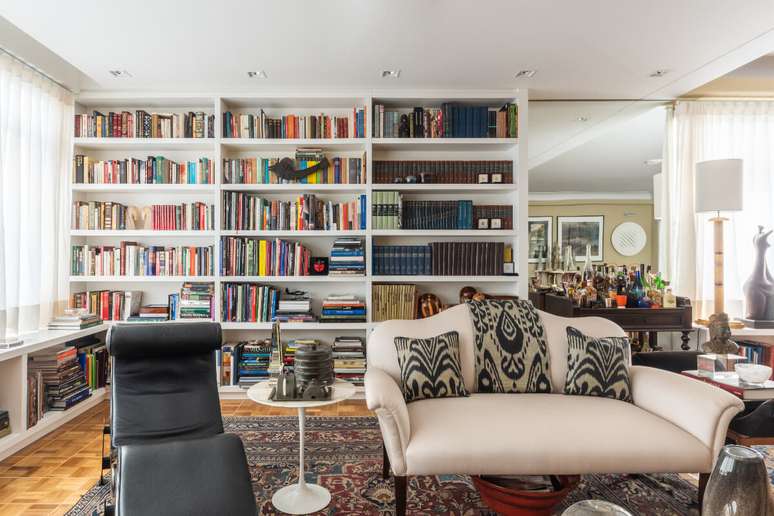The architect explains how to use these elements to create home decorations
Carefully displaying objects that reflect our personality and personal history is a powerful way of expressing ourselves in our spaces. Whether it’s a trophy, a collection of beloved books, or vases that bring nature into your home, each object has its own special meaning. To highlight these treasures, niches and shelves play a fundamental role in interior decoration.
However, the choice and installation of these elements requires care and planning to guarantee functionality, stability and harmonious aesthetics. “It’s a demanding mission competence and attention to detail, because, to avoid unforeseen events, it is necessary to take into consideration what and how you intend to display”, explains Bruno Moraes, architect of BMA Studio.
Next, discover some tips for using niches and shelves correctly in rooms!
1. Pay attention to the sizes
The importance of correct installation of niches and shelves it goes beyond the practical question because, if well positioned, they optimize the use of space and influence the perception of the environment. For the architect of BMA Studio, inadequate sizing translates into environments in which the imbalance compromises the general aesthetics.
“The challenges inherent in designing niches and shelves are many and begin with balancing dimensions. Height, depth and distance must be carefully calculated, considering not only functionality, but also harmony,” emphasizes Bruno Moraes.
First you need to be aware of what will be exposed, as this information will mainly affect the height. “An important object with sentimental value deserves to be highlighted; therefore it is interesting to be at eye level. Another possibility is to place it in a higher point, allowing a wider view”, explains the professional.
The placement of niches and shelves must take into account the entry of natural light, circulation in the space and integration with other elements. Furthermore, when talking about niches, it is necessary to investigate the thickness of the wall or piece of furniture on which they will be made both in depth and in the dimensions of the object to be displayed.
2. Load calculation
Calculating the weight of the objects that will be placed in the niches and shelves is another point that Bruno lists to ensure safety. Carelessness can cause significant risks, including collapses, structural failures, injuries and property damage, as well as financial losses. He emphasizes that, with the technical assistance of specialized professionals, the project will guarantee the technical specifications of the material used, its resistance to bending or compression and other factors such as the fixing method.
“To understand the supported load, we analyzed the material of the shelf itself. One of the glass It differs from a wooden model, which in turn is not even similar to a metal model”, compares the architect.
Next, look at the mounting location, as there’s no point in having a sturdy item if the wall can’t support the weight. On a wall of drywall, states that the ‘problem’ can be solved by installing reinforcements in the internal uprights of the structure. “This is very common and we do it often during renovations and construction projects,” he says.

3. Pay attention to aesthetics
The delicacy of the design lies in the ability to integrate niches and shelves in a way that contributes to the desired atmosphere without monopolizing attention. “A poorly aligned or incorrectly spaced niche compromises its main objective, which is to enhance the object on display”, explains Bruno. The architect also discusses the visual confusion caused by excess, as the human gaze is lost: an expectation opposite to what was expected.
For professionals, suspended shelves are synonymous with lightness and, therefore, need to be structurally solid. stainless steel and natural stones They have superior strength in outdoor areas and other materials will depend on the location, as every home is different.
In small apartments these components become solutions to maximize the use of space. Functionality becomes imperative and intelligent design allows for efficient organization of objects, books and ornaments, promoting not only visual beauty but also everyday practicality.
The architect says he has already created niches in small apartments by literally breaking the wall to reveal the bottom of the niche. “I did it because the apartment was so small that a niche in the wall would have impeded circulation,” he recalls.
4. Use of niches in bathrooms and outdoor spaces
According to Bruno, a niche inside the shower requires the use of natural stone, porcelain or ceramic. Outside bath It may have niches and shelves made in carpentry. Due to bad weather, external areas require, for example, niches or shelves in stainless steel, galvanized with the application of a primer and paint suitable for areas sensitive to bad weather, or in solid wood, provided that it is adequately waterproofed for its integrity.
5. Lighting as an ally
A lighting The right space emphasizes decorative elements, highlights features and provides focal points in the environment. The use of LED profiles is the most recommended, but the professional BMA Studio also suggests it staines adjustable and stackable luminaires. He also cautions to consider the light’s color temperature, CRI, and lumen intensity as a means of providing more attractive lighting.
By Emilie Guimarães
Source: Terra
Ben Stock is a lifestyle journalist and author at Gossipify. He writes about topics such as health, wellness, travel, food and home decor. He provides practical advice and inspiration to improve well-being, keeps readers up to date with latest lifestyle news and trends, known for his engaging writing style, in-depth analysis and unique perspectives.








